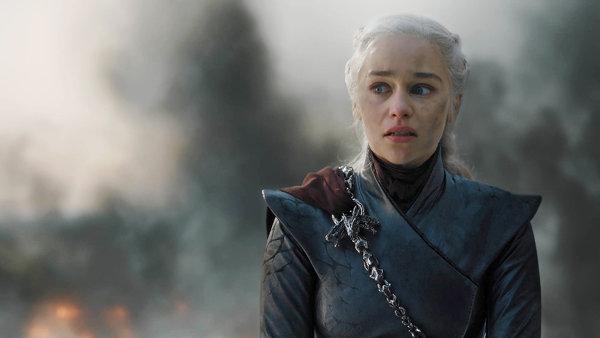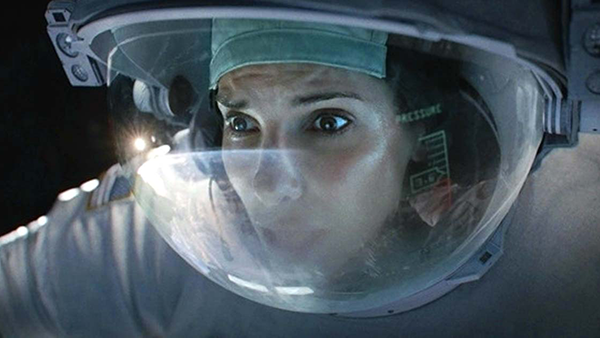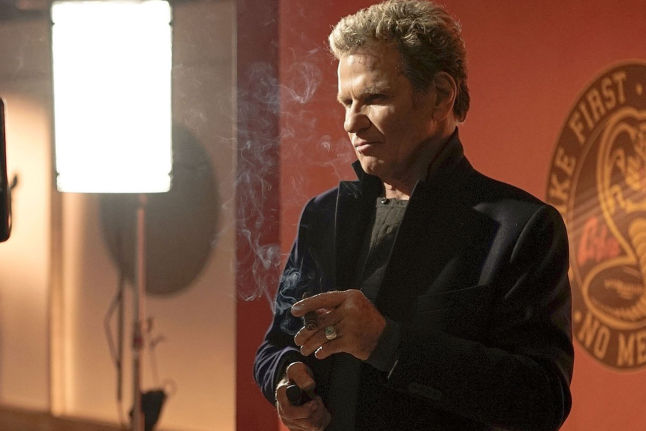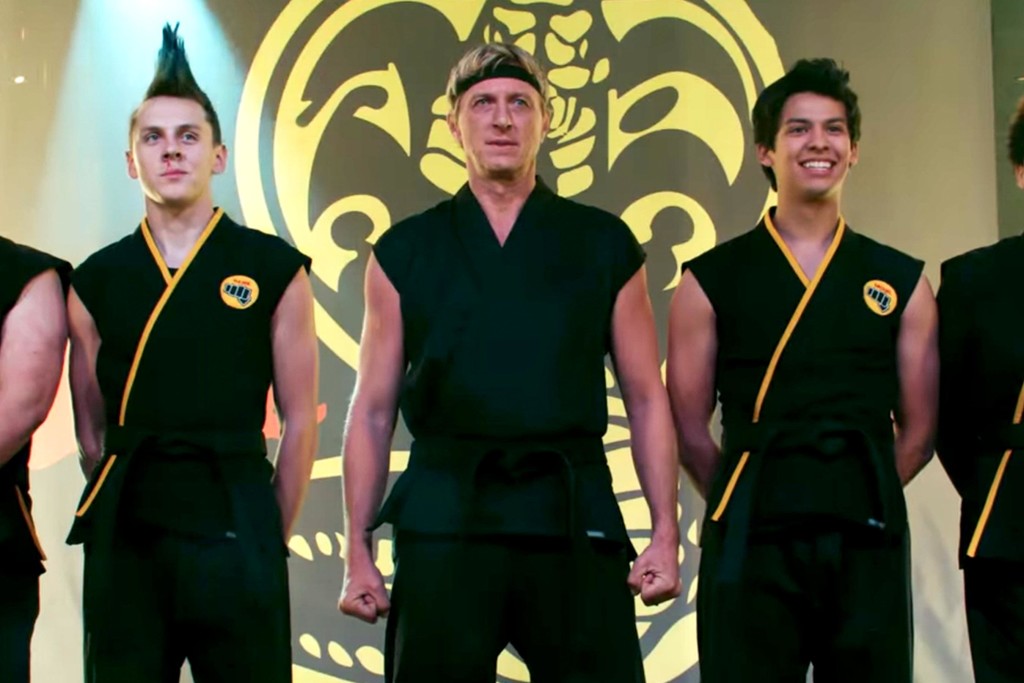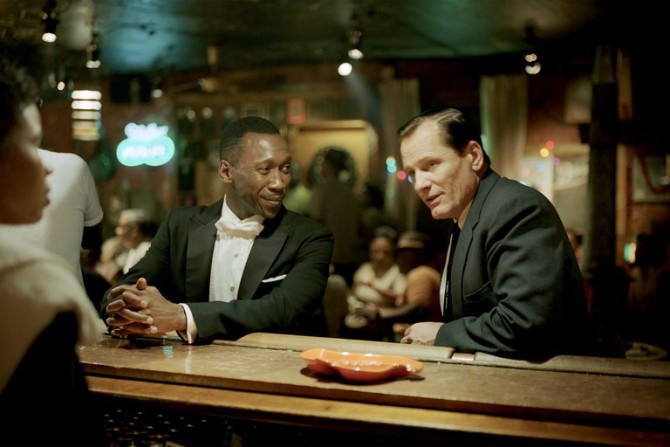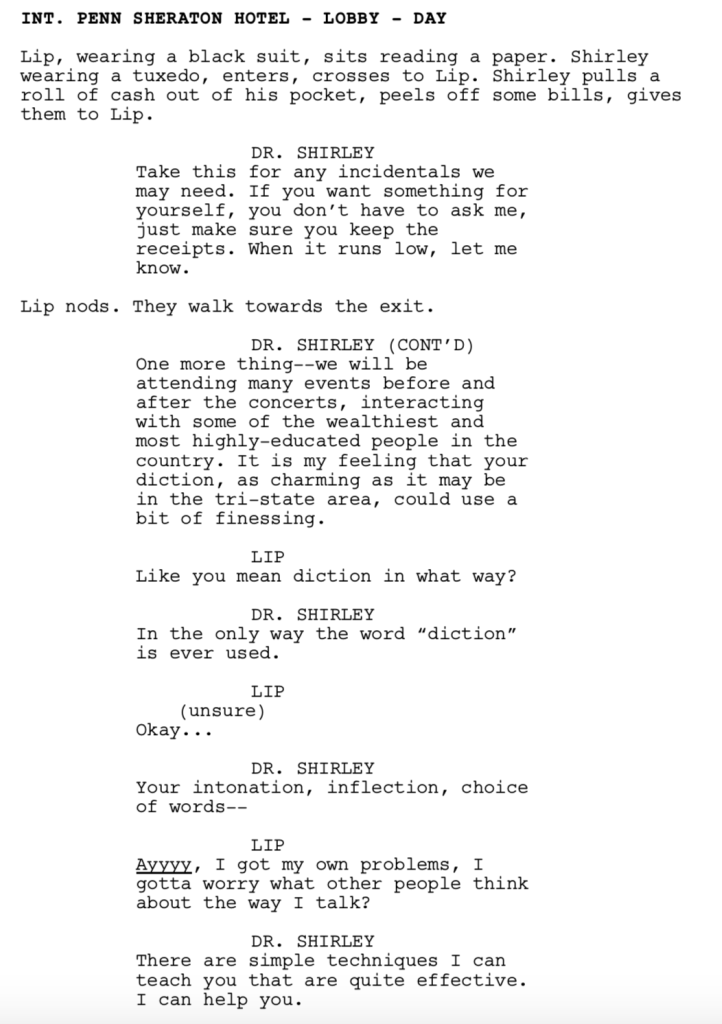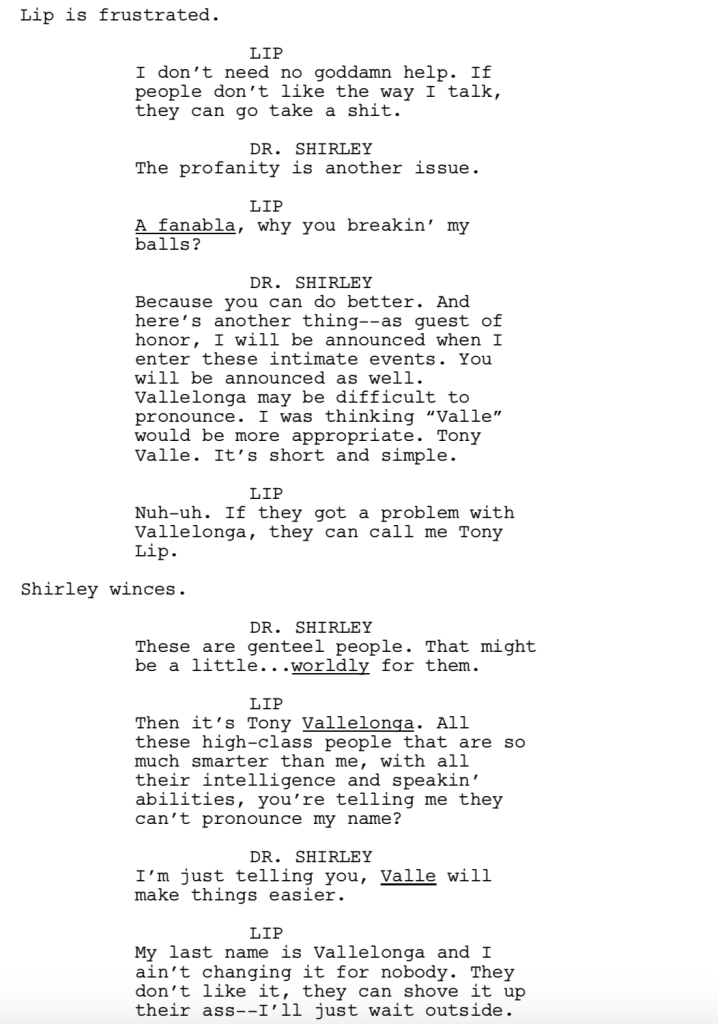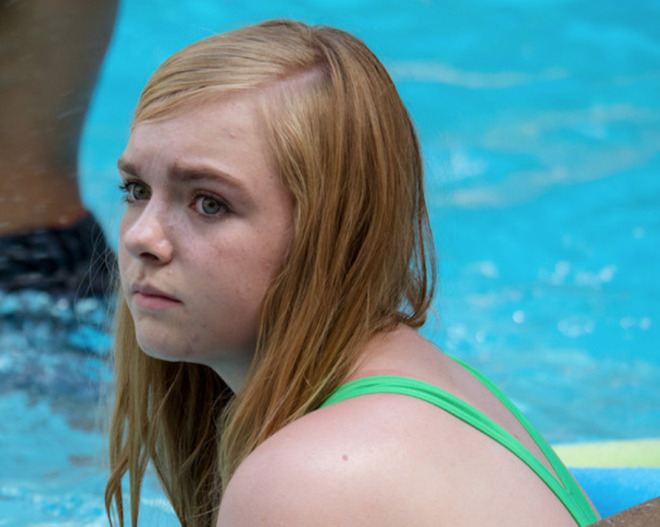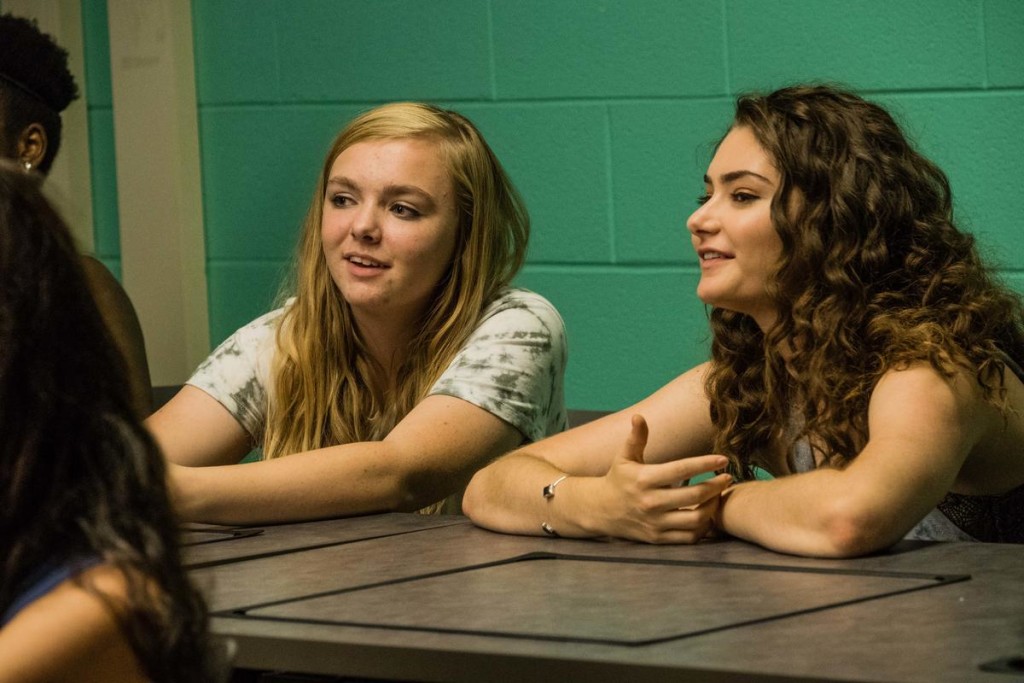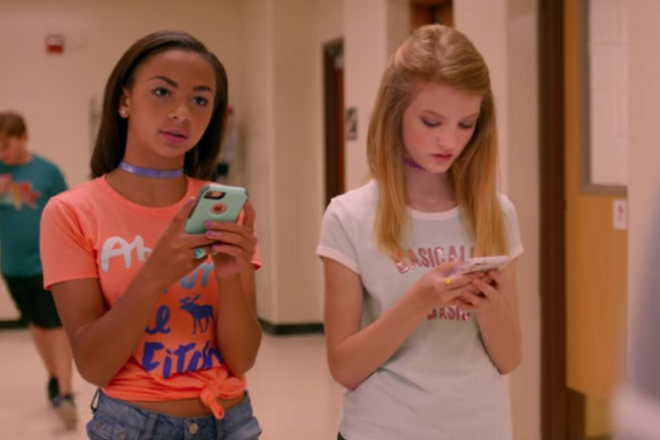Search Results for: 10 tips from
I have not been watching Game of Thrones like the rest of the universe. However, I’ve been paying close attention to reactions from the final season, since Game of Thrones creators Benioff and Weiss will be taking over my beloved Star Wars going forward. What everyone seems to be so upset about is that one of the main characters, Daenerys, made a major turn in the last episode that goes completely against her character. Staying with Star Wars, a certain other director who shall remain nameless (his name rhymes with Sighin’ Cronsohn) made a similar mistake in The Last Jedi, where he had the beloved Luke Skywalker act in a way he never would.
All of this got me thinking about one of the oldest questions in writing. Why are endings so hard?? Here’s how I see it. In a well-told story, everything is leading up to a clear resolution. For example, if your movie is about a cop in a building trying to stop a band of terrorists, the resolution is most likely going to be him stopping the terrorists. The problem is that if you give us the exact resolution we’re expecting, we’re going to be let down. For this reason, writers try to give us a different, unexpected resolution. Luke Skywalker refuses to fight Kylo Ren. Daenerys turns into the female Hitler. Unfortunately, it’s really hard to give us an ending we had no idea was coming and it still make sense. The whole point of your story is to set up what’s going to happen in the end. Now you’re telling us none of that was relevant?
Today I’m going to share six tips that should help you avoid making giant mistakes like this. Use them separately or combine them to create the ultimate ending super-weapon.
I’ll start with the most obvious and, unfortunately, most boring solution. IF WE LIKE YOUR CHARACTERS, WE’LL LIKE YOUR ENDING. It’s rare that I watch a movie where I love the characters and hate the ending. That’s because when you’re invested in the characters, you care more about them than some well-crafted plot twist. Look at Die Hard. Die Hard has a standoff between the hero, the villain, and the hero’s wife. It is a scene we have literally seen hundreds of times before. There’s nothing exceptional about the moment at all. The ending works purely because we love John McClane, we detest Hans Gruber, and we love John’s wife. Whatever occurs here, as long as our hero wins, we’ll be happy. So start by writing characters that we love.
You could extrapolate the flip side of this to The Last Jedi. Not many people liked the Luke Skywalker Rian Johnson created. He was crabby, defeatist, unhelpful, annoying, and drank green milk from a wildebeast’s teet. It could be argued that the dye was already cast for the ending. We disliked Rian’s Luke so much that it wouldn’t have mattered what he did.
Solution number 2 for a strong ending is the CLIMAX OF A PERFECTLY CONSTRUCTED CHARACTER ARC. This means that you’ve set up a well-defined flaw in one of your main characters, you have explored your character bumping up against that flaw the whole movie. And then, when the final battle occurs, they break through and overcome it. The best example of this I’ve ever seen is The Matrix. And I say that because the movie’s climax takes place in the most boring setting possible – a hallway – and it’s still amazing. The reason it’s amazing is because it’s all about Neo’s character arc. He spent the entire movie struggling with his belief in himself (his flaw), and now, when the pivotal moment arrives, he believes, and is thus able to defeat the villain.
Solution number 3 is MAKE IT IMPOSSIBLE – The problem with a lot of writers is there’s this sort of uninspired inevitability to their story. We know where they’re going because they make it so insanely obvious that that’s where they’re going. From there it’s just a matter of connecting the dots. Take us through beat 1, to beat 2, to beat 3, and the movie is over. The way to conquer this inevitability is to make things IMPOSSIBLE for your hero. I’m talking you make it so difficult EVEN YOU DON’T KNOW HOW THEY’RE GOING TO DO IT. Then, and only then, is your hero’s success going to have the enormous impact you’re looking for. Take a look at the last 20 minutes of Gravity. Even though you’re watching a Sandra Bullock film, at every turn it seems like there’s no way she’s going to survive.
Solution number 4 is the SUPER PAYOFF – Audiences LOVE payoffs. They’re cinema crack. Therefore, one of the trickiest, yet most effective, ways of creating a great ending, is to pay off all those setups you’ve been planting throughout your script. And if you haven’t been planting setups to pay off in your climax, what are you doing? The two films I’ve seen do this better than anyone else are Back to the Future and The Shawshank Redemption. It’s payoff after payoff after payoff after payoff. Where was the payoff in Luke’s final trickery in The Last Jedi? I’ll give you a hint. There wasn’t any. Which is why it was so lame.
Solution number 5 is a DIFFICULT CHOICE(S). If characters have easy choices in your ending, you probably don’t have a good ending. A huge part of what makes an ending great is the uncertainty behind it. There are no easy answers. There are no quick solutions. Your hero is going to have hard choices to make. The most famous example of this, of course, is Casablanca. But you can see it in a lot of movies. There’s a great moment at the end of The Mule where the cartel tells Clint, “That’s it. If you deviate one more time, we put a bullet in your head.” And on that very mission, he learns that his ex-wife is sick in the hospital. She’s probably going to die. Does he finish the mission? Or go see the mother of his children and grandchildren before she’s gone forever?
Finally, solution number six is MINING EMOTION FROM THEME – This is really hard to do since theme can often work against you. By this I mean, you can have great story ideas but have to abandon them because they aren’t extensions of your theme. The worst thing that can happen is you sacrifice everything to service a weak theme. This is what happened at the end of The Last Jedi. Rian Johnson was trying to push some complicated theme that only made sense if you read a 3000 word Last Jedi think piece on the internet, and as a result, we lost what could have been one of the most epic lightsaber battles ever. However, when you do this right – when the elements gel together – it can be magical. Pixar does a better job of this than anyone. Their movies are theme-heavy, but the difference between them and Johnson is that their themes are incredibly simple. At the top of the heap is Toy Story 3, which pushes the theme of “moving on.” Closing out the movie with a scene of the toys being given to a new child who could love and enjoy them just as much as their previous owner was the most emotionally satisfying way we could’ve concluded that theme.
It should go without saying that, like everything in movies, your gut plays just as strong a part in nailing your ending as these tips. You could follow any one of these suggestions and come up with something lame. If it doesn’t FEEL right, you probably want to go in a different direction. Good luck. And feel free to share your own “ending” tips in the comments.
Carson does feature screenplay consultations, TV Pilot Consultations, and logline consultations. Logline consultations go for $25 a piece or $40 for unlimited tweaking. You get a 1-10 rating, a 200-word evaluation, and a rewrite of the logline. If you’re interested in any sort of consultation package, e-mail Carsonreeves1@gmail.com with the subject line: CONSULTATION. Don’t start writing a script or sending a script out blind. Let Scriptshadow help you get it in shape first!
Genre: TV – Drama
Premise: When former Cobra Kai boss John Kreese moves back into town, he challenges Johnny to take his students to the next level.
About: This is Season 2 of Cobra Kai, the Youtube Premium sensation that became the most unexpected hit of last season. The pilot episode was viewed by over 60 million people. The show dropped its second season last Wednesday, giving people something to do while they waited for Avengers to open. But can the sequel possibly be as good as the original?
Creators: Josh Heald & Jon Hurwitz & Hayden Schlossberg (based on the screenplay, “The Karate Kid” by Robert Mark Kamen)
Details: 10 episodes
I have been waiting for this for the ENTIRE YEAR. Can I please get some Daniel LaRusso with a side of crane kick THANK YOU!
In this newest season of Cobra Kai, the evil John Kreese, the former owner of Cobra Kai and Johnny’s old sensei (the one who infamously told him to “sweep the leg” in that final fight), has come back to town with an eye on rejoining Cobra Kai. Johnny has conflicted feelings about it. Kreese was like a father figure to him. But in many ways, Kreese derailed his life. After giving it some thought, he allows Kreese in as an observer.
Meanwhile, Daniel LaRusso allows Robby (who’s Johnny’s son, remember) to stay at his house. He also starts a little Miagi dojo in the backyard for Robby and Daniel’s daughter, Sam, to get their karate on. And maybe, when Daniel isn’t around, some smooching. That’s right, the chemistry between these two is through the roof. But does Sam still have feelings for Miguel, even though he’s turned to the dark side and become Cobra Kai’s top student?
Kreese strategically works his way back into the Cobra Kai fold. First he’s observing classes, then offering tips, then teaching classes! Kreese is all about “no mercy,” which confuses Johnny’s students, since he’s always taught them that mercy is essential to being a great warrior. Needless to say, something’s going to pop here. And when it does, the Cobra Kai dojo and all of its students will never be the same.
You really get a sense of whether showrunners know what they’re doing in the second season. The first season is always the easiest to map out. Five hours of television is basically one long movie. So you can map out some sort of goal and move all your charaters towards it. Cobra Kai Season 1 uses the state karate tournament as its season goal. And that’s a big reason why the season worked. It had a clear vision of where the storyline was going.
The dirty secret about Season 2 is that most writers have never experienced it before. Almost all pilots that are shot never make it to air. And those that do make it rarely get to a second season. So whenever someone wins the lottery of having their show get to that elusive season 2, they’re in uncharted waters. They’ve never had to worry about this scenario before, so they make it up as they go along.
The one thing they do know is that television is about character. So they end up putting all the focus on character development. And while this is, of course, good, and while this medium is perfect for that approach, if you put all of your focus on character and none of it on plot, your audience is going to start wondering what we’re doing here. Why are we spending so much time with these characters if we don’t know where they’re going?
Cobra Kai’s creators said they weren’t going to do a tournament every season. And they shouldn’t. It would get too predictable. But that doesn’t mean you’re absolved of having any direction to your story. I was a good six episodes into Cobra Kai Season 2 and while I continued to enjoy the characters, there’s no doubt that the missing ingredient was momentum. And that was due to the fact that there was very little plotting.
Outside of a “sort-of there but not really” plot about Daniel starting his own dojo, the main plotting device used in this season is John Creese. Now this is a very important distinction so I want you to pay attention. There are two types of plotting devices you can use. One is to have your characters charge forward and bring the story with them (Rocky Balboa training for the heavyweight title of the world). Two is to throw something at your characters and see how they react. I call this the “disruptor” element. It’s self-explanatory. You throw something at your characters that disrupts them. John Creese is the disruptor. He comes in to shake up the Cobra Kai dojo.
You’ll use both of these plotting devices throughout a TV show. And while it’s certainly possible to only use the disruptor element, it’s dangerous. Because a disruptor merely makes your characters react. Ideally, you want your characters to act on their own. You want them making decisions and charging forward and bringing the story with them. And one of the problems with this particular disruption is that John Creese doesn’t pop the way they were hoping.
Unlike Daniel and Johnny, whose lives in 2019 are somewhat believable, it’s hard to buy that this old man has been doing absolutely nothing for 30 years but waiting to get back involved with a tiny karate dojo in the valley. And he’s old enough now where he’s lost a lot of his menace. So we’re not as afraid of him as we once were. Cobra Kai has been good at balancing reality with cheesy 80s movies logic throughout its run. But they may have pushed their luck with Kreese. And since he’s the only semblance of a plot for the entire season, that puts all of the pressure on the characters to carry the load.
The good news for Cobra Kai is that almost all of their characters are likable. I could watch Daniel and Johnny act together all day. His daughter, Sam, and Robby are also great. Miguel remains awesome, even though he didn’t get enough time this season. I loved the new bad girl. And I continue to perk up every time Hawk is in a scene. All you then have to do is place these characters in scenes with an adequate amount of conflict and your show will be relatively entertaining. For example, Miguel is constantly at odds with whether being a part of Cobra Kai is right. This conflict is carried into every conversation he has with Johnny or Hawk or Kreese, all of whom are ride-or-die Cobra Kai.
And then, of course, Cobra Kai’s secret weapon is its karate. When things get boring, it’s time for some karate in the woods, in the bar, or… AT SCHOOL! I’m telling you, that school battle almost single-handedly made up for the lack of plotting all season. At first I thought it was going to be your typical two people have a fight in the middle of the hallway with the rest of the school cheering them on. Then when the two guys ran up, I thought, “Oh, it’s going to be a four-way thing. That’s kind of cool.” But then when everyone started getting involved, my curmudgeonly screenwriting analyst self evaporated and I just sat back and marveled not only at how good the fight was, what a great payoff it had, but also how difficult it must’ve been to film the thing. I’m always conscious of when shows have to use minors because I know they have to be overly careful about anyone getting hurt. So to somehow pull off this super-stunt with tons of minors beating each other senseless – I was impressed.
And then, of course, that final shot of Johnny tossing his phone across the beach in anger and then seeing a close-up of the screen and it being a friend request from Allie. I was like, “Oh my God, put me in Season 3 right now!” Did they really get Elizabeth Shue to commit? That would be awesome.
Cobra Kai Season 2 wasn’t nearly as good as Season 1. But then again, Season 1 was perfect. It seems to me like Johnny may be teaming up with Daniel to teach at Miagi Dojo for Season 3, pitting them against Kreese. If you introduce a tournament back into the mix, we should be back to the level of Season 1.
[ ] What the hell did I just watch?
[ ] wasn’t for me
[x] worth the stream
[ ] impressive
[ ] genius
What I learned: Character conflict in television is wonderful. It’s what drives the majority of the entertainment. But you need a season-long destination the characters are moving towards to give the season focus. And you want to do that for every season. Not just the first!
We’re in the midst of a dialogue crisis.
Outside of Get Home Safe, a lot of the dialogue I’ve been reading lately has been downright forgettable. It didn’t take long to figure out why that is. A lot of the current dialogue out there lacks LIFE. And I have a theory as to why. There are very few people who can actually write good dialogue. There are even fewer people who know how to teach good dialogue. So what everybody does is create a new world order whereby the best dialogue is as little dialogue as possible.
Do these mainstays sound familiar? “Less is more.” “Come in as late as possible. Leave as early as possible.” “Show don’t tell.” If you told any screenwriting guru that they could only use one anecdote when talking to an audience of screenwriters, the one they would all choose is the scene where a married couple is in an elevator, the doors open, a beautiful woman walks in, the man takes off his hat and gives her a giant smile, and the wife, seeing this, takes a step away from her husband (there are several variations of this scene but this is the most popular). The reason gurus love this scene so much is because it says everything without the characters saying anything.
But here’s the problem with that. YOU CAN’T DO IT EVERY SCENE!!!! If you did, you’d have the most boring script ever. Here’s a newsflash: YOUR CHARACTERS HAVE TO TALK SOMETIMES. IF you keep running from that, not only will your script be unrealistic, but we’ll never get to know the characters. Sure, a character action tells us a ton about a person. But you know what also tells us a lot about a person? WHEN THEY TALK!
The anti-dialogue movement can be traced back to two periods. Period One was the Tarantino knock-offs. When Pulp Fiction became huge, everybody wrote their big dialogue-driven movie. What the industry and audiences quickly found out, however, is that not everyone can write cool off-the-cuff effortless dialogue like Tarantino. So in order to rein everyone back in, teachers, gurus and producers encouraged the less is more approach. Let’s get back to basics and only have people say things when they actually have to say things.
Period 2 was Juno. Juno was even more influential in curbing dialogue than the Tarantino Knock-Off Era because the movie’s backlash came at the beginning of everyone rushing to the internet to complain about everything they didn’t like about a movie. So that fun punchy overly stylized dialogue that Diablo Cody wrote was now considered persona non grata. You’d be better off writing a silent film than one with Diablo Cody dialogue.
Now I’m not knocking these age-old screenwriting lessons. Less is more in a lot of cases. For the most part, you should come in late and leave early. And showing me something is often going to be more impactful than telling me about it. But that doesn’t mean you should fear dialogue. You still want scenes where you let go and allow your characters to speak. Because what I’m encountering with this warped less-is-always-more view is that I leave the story feeling like I never got to know the characters. And if they would’ve had a few more conversations, that would’ve been different. I mean this isn’t rocket science here. How do you get to know someone? BY HAVING A CONVERSATION WITH THEM.
Now the tricky thing about screenwriting is that you have to do this, but you still have to dramatize it. In other words, you can’t put two characters across from each other in a diner booth and have them talk for 20 minutes and then when the Black List reader complains that he was bored, say, “Well Scriptshadow said it was okay because we needed to get to know the characters better.” No. Having long boring conversations at the expense of entertainment is not what I’m advocating. You have to figure out a way to maneuver these conversations into some sort of dramatic framework.
A big reason why the diner scene between Vincent and Mia in Pulp Fiction works even though it’s a big long dialogue scene with characters sharing their thoughts, is that Mia is one of the sexiest women on the planet, she’s flirting with Vincent, and she also happens to be the wife of his gangster boss. If he indulges in anything with this woman, his life is literally at stake. There’s tons of conflict in this scene even though it’s just two people talking. So that’s the catch. You want to add more dialogue to your scripts, but you have to do so within a framework where we’re still being entertained in the process.
So let’s say you master that part. You at least know how to a set up a scenario whereby your characters can talk and it not be boring. How do you then write memorable dialogue? What’s the trick to making those words sing in a way that gets everyone lauding you as the next great dialogue writer? Well, that’s the secret sauce isn’t it? If it were only so easy. The problem with writing great dialogue is that much of the advice that gets you there is not directly actionable. For example, if I say, “Keep your script under 110 pages,” that’s actionable. You have a clear directive to follow. But if I say, “Your dialogue is too bland. It needs more flavor,” it isn’t clear what one can do to add more “flavor.” This list below is the best I can do to bridge that gap for you. But ultimately, dialogue is a living breathing organism that can never be quantified. Its beauty, or lack thereof, will always be elusive.
1) Get into conversations with different types of people and pay attention to how they talk and what they say.
2) Dialogue, more than any other type of writing is about not thinking when you write. Let go and allow the characters to speak. See what comes out. You can always edit it back later if you go too far.
3) Understand your characters’ socio-economic backgrounds. This differentiates the characters and adds color to the dialogue. Someone from the Bronx will speak differently than someone from Silicon Valley.
4) Research vocabulary and slang on Youtube for character types unfamiliar to you. Bo Burnham did this with his characters in Eighth Grade.
5) Knowledge. The more you know about a subject matter, the more detail you can include in the dialogue. Aaron Sorkin is a master at this.
6) Embrace messiness. Real conversation is never perfect. Some people are distracted. Others mishear things. Some don’t care. Characters should never feel like they’re chess pieces waiting to be spoken through. They should speak of their own accord.
7) When conceiving of your story, include a couple of characters who like to talk, since those are the characters who often say the most interesting things. There’s nobody who liked to speak more than Steve Job in Sorkin’s, “Jobs.”
8) Every single person has their own unique sense of humor. Since humor is one of the most defining qualities, figure out what type of humor your character gravitates to. Gallows? Sarcasm? Dad-jokes? Dirty? Makes jokes at the expense of others?
9) Dress dialogue up. Phrase things in ways that nobody else would’ve thought of.
10) Listen to a lot of people, talk to a lot more, and study dialogue in all the great dialogue-driven movies – pausing every time you liked an exchange and asking yourself why.
I want to finish this off by posting a scene from the movie Green Book. I’ve never seen Green Book. However, one look at the characters and I knew they were designed for dialogue (one is highly educated while the other grew up on the streets). I flipped to a random scene in the middle of the script and I got this. The scene doesn’t hit all the beats I’ve discussed today (It’s relatively short). But it does get the characters talking to each other. It highlights the differences between their socio-economic backgrounds. One speaks eloquently. The other does not. And the scene has a dramatic purpose. They’re not just chatting. They’re working through a problem (Dr. Shirley needs Lip to look and act more refined for an upcoming event). Most importantly, I have a better sense of who these two people are after this conversation. For those who haven’t seen the film, Dr. Shirley (Mahershala Ali) is a famous black gay musician and Lip (Viggo Mortenson), a brute tough guy, is driving him cross-country from concert to concert.
I would love to hear your tips on writing better dialogue. And no, I don’t mean “include conflict,” and “less is more,” and “the best dialogue is when there’s no dialogue.” I mean when your characters ACTUALLY CONVERSE WITH EACH OTHER, how do you make it sound better? Discuss!
Genre: Horror
Premise: Something terrifying awakens within a middle-aged mom when she finally decides to watch the now-classic horror film that she starred in as a child.
Why You Should Read: To this day, rumors persist of a supposed “curse” attached to the modern classic horror film, “The Beholder”. The movie enjoyed both critical acclaim and box office success upon its premiere in October of 1983, and it is still commonly hailed as being among the most terrifying films in the history of American cinema.
But the film’s production was plagued by an endless string of on-set accidents, misfortune and tragedy. And the “curse” only seemed to intensify in the months and years following the movie’s release with the mysterious and untimely deaths of many of the cast and crew, including director John Friedman and lead actors, Betsy Cartwright and Peter Monahan.
Only nine years old at the time, the film’s youngest star, Joanne Harvey, seemed poised to take the movie industry by storm. But in the wake of an auto accident that claimed the lives of her parents after the premiere of “The Beholder”, Joanne Harvey disappeared from Hollywood, never to be heard from again.
Writer: Nick Morris
Details: 88 pages
It’s funny that I read this script when I did. Just yesterday, I was watching Halloween for the 10 Tips article I wrote, and noticed that the little girl Laurie’s friend was babysitting in the movie looked familiar. I went on IMDB to find out that her name was Kylie Richards. I then googled that name to find out that Kylie Richards was now on the cast of Real Housewives of Beverly Hills. Ah-ha, I thought, that’s where I recognized her from. If you need proof that child actresses are doomed to a bizarre trauma-filled life, look no further than where that young girl ended up.
Meanwhile, back at the farm, Nick Morris has won yet another Amateur Offerings, and in a competitive situation. I can’t remember the last time every script got at least three votes. Usually, a couple of scripts are left with 0 or a single vote, which tells me this may be Nick’s biggest win yet. I also heard Nick say he hopes this is finally the script that gets him that “worth the read.” Let’s find out if it does!
45 year old Joanne Bennet’s best years are behind her. One look at her family life and you get a sense why. She’s stuck on her second husband, a trucker who cares more about Call of Duty than couples time, and his weirdo 12 year old son, who’s basically a clone of his father. Even Kaley, Joanne’s 22 year old daughter, is saddled with a newborn that prevents any quiet moments at home.
One morning, while on her way to work, Joanne gets rear-ended by a hipster in an Audi, Brent, who immediately recognizes Joanne. It turns out Joanne was a famous child actor in the horror classic, The Beholder. Brent freaks out because The Beholder is known for being cursed. Many of the people who worked on it mysteriously died. Nobody even knew what happened to Joanne. After geeking out, he invites Joanne to the Dallas Horror Fest, where she’ll be able to make a ton of money signing autographs.
Joanne’s reluctant as she’s never seen the movie. She knows of its “cursed” past and simply figured it was better not to watch it. But she needs the money so she goes. The experience turns out to be a blast, with Robert Englund and Linda Blair admitting they’re big fans. Joanne heads home on a high, and when Kaley suggests finally watching the film, Joanne figures, why not?
The two sit down to watch the movie, which centers around a couple of cursed parents who want to kill their daughter. After the movie, Joanne starts seeing glowing eyes in the house, only to later rip out her own eyes, becoming a “beholder” herself. She then kills her poor daughter, then waits for her husband and stepson to show up so she can kill them too. She succeeds, killing them all, then later goes on to star in the sequel to the film, Beholder: Redemption.
While I tried to stay out of the comments, I did catch a few tidbits about the script – the first being that Nick was rushing to finish the script in time. The second being a lot of people had problems with the third act. Both of these issues affected my read as well. I could tell this script was rushed, and I couldn’t get on board with the ending.
The script started out strong. I loved the way the family was set up. Compared to Wednesday’s script review, and even yesterday, with the original Halloween, this family felt more complex and more interesting than any of the characters set up in those two scripts. The scene where Joanne comes home and her husband and step-son are playing Call of Duty while her daughter is nursing her grandchild – it painted such a clear picture of what this woman’s life was like.
Unfortunately, after that, each subsequent scene felt more rushed than the previous one. And a lot of that had to do with the fact that our hero wasn’t carving her own path. She was waiting for the writer to carve it. It was the writer who crashed a car into our hero. It was the writer who, coincidentally, made the driver of that car the Horror Fest Coordinator. It was the writer who brought our hero to the Horror Fest. Our hero wasn’t doing anything but following the lead.
It wasn’t until the third act that Joanne started acting on her own. But by that point, things had gotten so ridiculous (she’d ripped her eyes out and was running around killing people) that I was now focused on new problems. Usually, in these movies, the main character is either running or trying to defeat the monster. But in Evil Eye, she’d become the monster. And she was killing characters we liked, like the daughter. So I had all these confused feelings as I was reading the climax.
The thing is, there’s SOMETHING TO THIS IDEA. When I read this logline, I liked it. But I didn’t imagine something this cheaply thrown together. I wanted the same kind of depth that was given to the family to be applied everywhere, the plot in particular. Why can’t Joanne watch the film in the first act, and then, as she goes through her daily life, she starts seeing these glowing eyes in the eyes of the people she knows. So she’s trying to figure out if she’s going crazy or not. By the end, of course, she does go crazy. And that’s when she kills her family.
But if you’re going to do that, you need to spend a lot more time with the family. We need to get to know the dad, the stepson, and daughter, beyond that first scene. Because once you switch Joanne into a demon, we need someone else to root for. And you’re probably going to want that to be the daughter. Or, if you want to take this to a dark place, you can make the daughter a bitch as well, and that way when we kill the entire family, we feel like they got their just due. But right now, half the family is good and half is bad, so it’s confusing when they’re all killed.
Here’s the reality of screenwriting. Any reader worth his salt can tell when they’re reading an early draft. You can’t hoodwink them. I know when a writer is rushing things along because everything in the script happens too easily and many of the choices are uninspired. Good choices come from putting your script through the ringer, going through the rewrites and asking yourself, repeatedly, “Is this the best scene I can write?,” “Is this the best plot twist I can come up with?” And if the answer’s no, you one-up it. And if you keep one-upping things every draft, you’re eventually going to have a good script.
What’s so frustrating about The Evil Eye is that there’s a movie here but the script is maybe 25% of where it needs to be. Every aspect of this story needs to be expanded. We need more detail, more specificity, more stuff to happen. I don’t even think there’s a character goal in any of this. Which is a big reason why the plot feels so empty. I don’t know if I’m repeating what others have pointed out or if this is new information, but regardless, I love Nick’s passion for horror and hope he turns this into something great.
Script link: The Evil Eye
[ ] What the hell did I just read?
[x] wasn’t for me
[ ] worth the read
[ ] impressive
[ ] genius
What I learned: I’m not sure you can turn your hero into the villain for the final act. There may be a few movies that have done it. But it’s confusing for an audience member who’s been rooting for a hero the whole movie, to then be asked to root for everyone besides the hero. I don’t know how that works.
Eighth Grade isn’t only one of the best films of the year. It’s got some kickass screenwriting lessons hidden inside it. Today, I share them with you.
Genre: Drama
Premise: A chronically introverted eighth-grader attempts to navigate the end of the year by finally breaking out of her shell.
About: Bo Burnham became an Youtube celebrity for the 13 year old demographic when he was just a teenager. He became such a sensation, Judd Apatow hired him to write a teenage musical when he was just 18 (Burnham admits that Apatow made a huge mistake – he had no idea how to write a movie at the time). Now 27, Burnham has come out with his first film. Apropos to his perceived demographic, it’s about a 13 year old girl. The raw real energy of the film shocked the festival circuit, making Burnham a wanted man by every studio in town. If its 99% Rotten Tomatoes score hasn’t convinced you to watch it, maybe this review will.
Writer: Bo Burnham
Details: 90 minutes
I’ve been keeping an eye on Eighth Grade for awhile now. I’d heard amazing things about it, yet I wasn’t convinced the subject matter would be to my liking. In the end, I decided to give it a shot for no other reason than to see if Burnham wrote a screenplay for the movie. I’m convinced these artsy writer-director types don’t care about the script. And I always like to call them out for it. Boy was I barking up the wrong tree this time.
If you haven’t seen Eighth Grade, it follows Kayla, a quiet girl who lives with her father and spends the majority of her time on Instagram and Youtube, where she makes videos of herself giving advice. The irony is that Kayla doesn’t have any experience in the topics she speaks about. The videos are used more as a self-motivational tool. For example, she’ll make a video about “How to be Confident,” then attempt to use those tips the next day at school.
The plot for Eighth Grade is non-existent. There’s no overarching goal. The closest thing we have to a narrative is Kayla getting invited to a popular girl’s pool party. “So my mom said I had to invite you to my party so this is me doing that,” the girl texts Kayla. That and Kayla pining for the hottest boy in class, Aiden, who’s said to have broken up with his previous girlfriend because she wouldn’t send him naked pictures, an opportunity Kayla believes she can exploit.
Eventually, Kayla becomes friends with Olivia, a genuinely kind girl in high school who Kayla meets during the high school “shadow” program. Olivia invites Kayla out with her friends where Kayla tries desperately to shed her quiet persona. She fails, then finds herself alone in the car with an aggressive boy on the ride home, who she escapes, but not without some emotional damage. Kayla manages to toughen up before graduation, finally opening herself up to a new friendship she didn’t even realize was available.
Despite this being a director-driven movie, there’s a lot more screenwriting here than you’d think. Pay attention all you young directors who think movies are pretty shots and cool music. You’re gonna learn sumthin.
For starters, while there isn’t a goal, there is a timeframe. This is a technique I’ve endorsed in the past. Not every story has a goal-driven narrative. The problem that occurs when you don’t have a goal is that your plot starts to wander. You can alleviate this by adding a timeframe, preferably one that ends soon. Eighth Grade starts with a week left til graduation. Since we now know when the story is ending, we don’t care so much that it lacks a goal.
The script also establishes a clear flaw right away. Kayla is quiet. She hates being quiet. She desperately wishes she were loud and talkative like all the cool people in school. How aggressively does Burnham push this flaw? Kayla is awarded “Most Quiet” for the yearbook. I bring this up because a lot of writers think that when you’re writing character driven scripts, you want to be super-subtle about everything. This proves that the opposite is true. Kayla’s flaw is front and center, and it dominates her journey throughout the movie.
But where Burnham really separates himself is through Kayla’s Youtube videos. Again, most indie filmmakers would be overly subtle about who Kayla is, attempting to depict her through her actions alone. While this can be done, it’s extremely difficult. Sooner or later, we need some insight into the character, and we can only get through characters speaking.
So what Burnham did was genius. He explored Kayla’s thoughts through her videos. And not in an on-the-nose way where she’d say, “Today was terrible. Nobody likes me. I’m sick of eighth grade.” No. Instead, Kayla uses her channel to instruct people on how to be strong or how to be confident or how to overcome fear. Since Kayla isn’t good at any of these things herself, we realize that these videos are representations of who she wants to be.
I contrast this with one of the worst indie high school movies I’ve ever seen, Gus Van Sant’s “Elephant,” which does all the things I tell you not to do. The characters don’t speak. We only get to know them through their actions. Everything is extremely subtle. We get zero insight into the characters, and therefore don’t care about them. Kayla’s videos are the key to making her not only memorable, but arguably the most memorable character of the year.
There were a lot of little decisions I loved as well. The second act revolves around a pool party that Kayla gets invited to by the mother of a girl who doesn’t like Kayla. In your traditional studio high school movie, what happens here is that Kayla’s father forces her to go to the party even though she doesn’t want to. But Burnham has Kayla decide to go on her own. The reason this is such a great choice is because it makes your hero ACTIVE. Your hero is deciding her fate. Audiences always prefer this over a character’s fate being chosen for them.
Then there were non-traditional ways of dealing with traditional moments. Like when Kayla finally confronts the cool girl over the fact that Kayla’s always nice to her and she’s never nice back. The scene is an odd one, with Kayla never once looking the girl in the face while she yells at her. Nor does Kayla have a slam-dunk final blow that you’d see in your typical studio movie. Instead, the attack ends awkwardly, with Kayla stumbling away and us never seeing how the girl reacted. It was odd but at the same time way more real than what we’re used to seeing.
I think this film works not only because Burnham did an amazing job directing (the score, in particular, was awesome) and the actress who played Kayla was great. But also because the themes are universal. If you’ve ever wondered how you make a movie that stands the test of time. This is how. You key in on universal themes that everyone feels, not just in 8th grade, but throughout life – loneliness, courage, wanting to break out of one’s self-imposed shell. That was what Kayla did and that’s what helped make this one of the best movies of the year.
[ ] What the hell did I just watch?
[ ] wasn’t for me
[ ] worth the price of admission
[x] impressive
[ ] genius
What I learned: Kayla is a reminder of one of the most powerful character types you can write – someone who’s in a shitty situation, but who keeps their chin up and never stops fighting. There were so many moments in this movie where Kayla could’ve thrown up her hands and given up. The girl literally had zero friends. Every day at school was a struggle. But she always got up the next day, made a new positive video, and tried to make her life better. It’s literally impossible to dislike a person like this. Keep that in mind when you’re writing your next hero.

